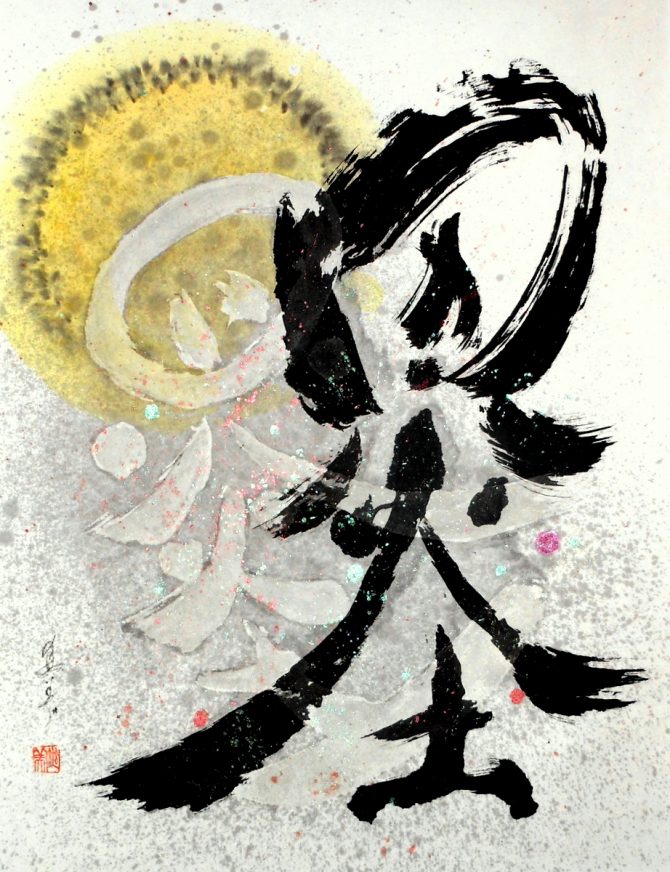SUMI-E is the Japanese word for black ink painting. East Asian painting and writing developed together in ancient China using the same materials —brush and ink on paper. Emphasis is placed on the beauty of each individual stroke of the brush. The Chinese speak of “writing a painting” and “painting a poem.” Sound Puget Sumi Artists (PSSA) was created in 1986 in Tacoma to promote an understanding and appreciation of sumi painting (Sumi-e) and Asian calligraphy (shodo). Today, the group has nearly 70 active members from all over Washington.
Ink Play, PSSA’s 30th Anniversary exhibition, features a variety of approaches to the challenges of sumi – from complex landscapes and bouquets of flowers or elegant calligraphy to the simplicity of a bird, a fish or a single flower or leaf captured in just a few strokes. What they all have in common is a quality of spontaneous vitality and effortlessness.
For Tacoma artist Selinda Sheridan, the most difficult part of sumi art is “practicing with the brush long enough so that the brushwork appears effortless, whether calligraphy or painting.” Sheridan states “[I’ve] always been attracted to sumi painting. In fact, the first book I ever bought for myself was Ryukyu Saito's classic manual Japanese Ink Painting. After studying Chinese for many years, I used what I knew about Chinese calligraphy and began learning how to paint.”
“What I continue to learn in the practice of sumi,” explained the artist “is how to remain open and attentive to the rhythmic changes of life.”
Ink Play continues through November 12 in the Main Branch’s Handforth Gallery.


